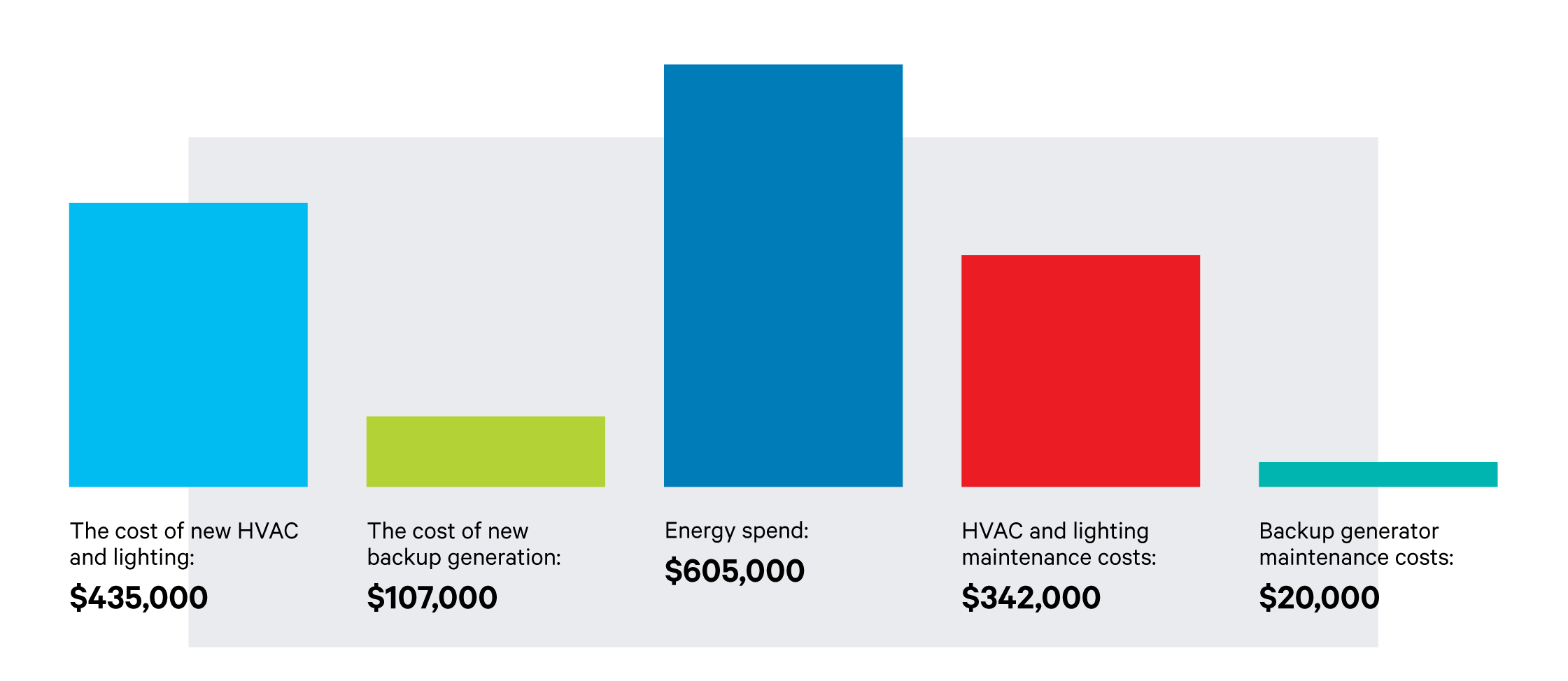The True Cost of Owning Your Energy Systems
It's no surprise that running a top-notch senior living facility is expensive. In looking at dozens of facilities, we've noticed trends in how organizations are spending their operational and capital dollars. What did we learn? The cost of energy systems are unnecessarily high and represent a large chunk of CapEx. In one estimation, based on a real 47,000 sq. ft. facility in Alabama, owning and operating lighting, HVAC and backup generators cost $1.5 million over 10 years — about 13% higher than they needed to be spending.
We broke down the numbers to see exactly where they were spending their money and identified three ways you can optimize your energy spend.
In one estimation, owning and operating lighting, HVAC and backup generators cost $1.5 million over 10 years — about 13% higher than they needed to be spending.
How Much It Costs to Own Your Energy Technology
Here’s an example of how $1.5 million in energy system costs could break down over 10 years before considering tax contributions and depreciation:
- The cost of new HVAC and lighting: $435,000
- The cost of new backup generation: $107,000
- Energy spend: $605,000
- HVAC and lighting maintenance costs: $342,000
- Backup generator maintenance costs: $20,000

Based on that breakdown, there are three key learnings you need to know about owning your technology.
1. Preventive Maintenance Pays Off
Though it can be tempting to strike preventive maintenance from your OpEx budget, it’s far less expensive in the long-run when compared to corrective maintenance. According to one study, preventive maintenance costs 12 – 18% less than reactive maintenance, which often involves extra fees for off-hours servicing, rushed shipping for replacement parts and similar added expenses.
Preventive maintenance is also a money-saver because it allows your technology to run more efficiently. Facilities that maintain their HVAC well, for example, use about 15 – 20% less energy, which is a significant cost saving.
2. Monitoring & Controls Can Save You Money
Advanced monitoring and controls are exciting developments in the smart buildings category but often feel time-consuming to keep up with, hard to decipher or like an expensive luxury for organizations with tight budgets. But monitoring and controls offer a myriad of benefits that can save your organization money, including:
- Regulating air conditioning and heating needs based on occupancy
- Turning lights on or off based on occupancy
- Raising or dimming lights based on outside light coming into
the building - Tracking system performance and planning for replacements and maintenance more accurately
- Alerting facilities staff when a system irregularity occurs, therefore avoiding business interruptions
Each of these functions can optimize your building systems to reduce energy spend and avoid costly emergency repairs and building closures.
3. Opportunity Cost Is a Substantial Hidden Cost
Most businesses are familiar with the concept of opportunity cost: by spending your capital on X, you aren’t able to spend it on Y, which could have yielded a higher return. It’s important to include opportunity cost in energy technology budgets because these costs can quickly add up to hundreds of thousands of dollars over several years. In that same time, you could have spent that money on salaries for much-needed staff members, facility renovations, or even portfolio expansion.
Purchasing new energy technology is an important line item in a senior living facility’s budget, but why spend more than what’s truly necessary?
"Energy-as-a-service models have emerged in recent years as an alternative to the cash purchase most businesses are used to. "
How to Reallocate Your Energy
System Budget
Allocating CapEx toward purchasing new energy systems is a tried-and-true system for senior living executives, but it’s not the only way to ensure your buildings get the maintenance and upgrades they need. Energy-as-a-service models have emerged in recent years as an alternative to the cash purchase most businesses are used to. The Southern Company Technology Subscription is one such example. Subscribers get to outsource the ownership and operation of their energy systems to Southern Company for a fixed, monthly OpEx fee and backed by a performance guarantee — allowing senior living organizations to focus their time, capital and resources on their core business.
